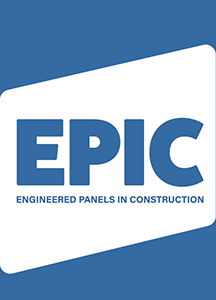One of the key requirements of the Building Safety Act is the need to maintain a ‘Golden Thread’ of information for Higher-Risk Buildings (HRBs). The purpose of this thread is to ensure that any information about the building that is relevant to safety is readily available throughout its lifetime. This has changed how materials are specified and used on a fundamental level, and traceability is now an essential feature of any product that is used in the construction of HRBs.
Insulated panels are a great example of a product with a long history of traceability which helps to enable compliance with the latest legislation. This makes them an asset to architects, surveyors, specifiers, building owners, building control officers, and fire safety engineers when it comes to maintaining the Golden Thread.
Why is product traceability so important?
The Grenfell Tower disaster highlighted major gaps in the construction industry’s fire safety practices. Failures at every level caused a huge loss of life and triggered an inquiry to determine how we could avoid a repeat event.
Dame Judith Hackett was commissioned by the government to lead an independent review of Building Regulations and fire safety. Her ‘Building a Safer Future’ report describes in detail how the regulatory system in place at the time of the Grenfell disaster was not fit for purpose. One of the key findings was that important safety information was not effectively managed or even available to the people who needed it to secure the building’s safety.
For example, the report noted that there were no sufficient audit trails showing when safety work was done. It also highlighted concerns regarding quality assurance and the ability to trace products back to their manufacturing process and ensure they met testing specifications.
The key issues underlying the systemic failure of fire safety regulation included ignorance, indifference, lack of clarity on roles and responsibilities, and inadequate oversight and enforcement.
Part of the solution put forward was that all new and existing HRBs would have to create a ‘Golden Thread’ of key compliance and safety information that is added to at each stage of the construction process, checked at key building control ‘gateways’, and then passed to building owners to inform future works.
What is the ‘Golden Thread’?
The ‘Golden Thread’ of information contains everything needed to understand a building and keep the people in it safe – now and in the future. That includes knowing how every product in the building was designed, manufactured, fire tested, and installed, as well as any alterations they may have undergone since installation which may compromise performance.
As to how that is all tracked, the Ministry of Housing Communities and Local Government (MHCLG) has specified that the Golden Thread will:
- Use digital tools and systems to enable key information to be stored and used effectively to ensure safer buildings.
- Support dutyholders and Accountable Persons throughout the life cycle of a building by recording the original design intent and ensuring subsequent changes to buildings are captured and preserved.
- Incorporate all the information needed to understand a building and how it should be managed so that the building and above all the people in and around a building are safe, both now and in the future.
- Make information easily available to the right people at the right time.
- Put in place a new higher standard of information-keeping which will support the building safety regulator in being assured buildings are being managed safely.
At every stage of the building lifecycle, from the first planning submission through to its ongoing operation, construction specifications must demonstrate that they are compliant with these regulations.
That means using products which are easily traceable to help responsible people identify, understand and mitigate any risks of fire spread or structural collapse.
Insulated panels are a traceable, accountable asset for any project
Insulated panel systems typically have features that make them easy to identify, understand, and trace.
Firstly— as they are usually supplied direct from manufacturers— manufacturers often hold a clear archive of project information, allowing them to identify the specifications of the panels delivered to a specific address.
Many panels are also marked. The manufacturer may use an ultraviolet (UV)-sensitive ink, inkjet product, or similar to allow contractors, surveyors, specifiers, building owners, building control officers, and fire safety engineers to easily find important information. These markings may note the date and time of manufacture, core type, or a manufacturing plant reference for each panel. In some cases, the panel markings may also include insurance fire certification. Following a discussion with the manufacturer, they can then use this information to discover exactly when and where each panel was made, find fire testing results, and view the product specification information. Nb. Please contact your panel manufacturer directly to learn more about its process of panel marking and traceability.
These forms of identification have been used on insulated panel systems for decades, allowing a major component of legacy buildings to be readily traced, even before the digitisation of such information. For example, we had an enquiry recently about a building that was constructed circa 2007. One of our members was able to confirm the product was manufactured by them via the UV markings and the age of the panel, enabling them to supply the relevant product data sheet to resolve the enquiry.
Whilst this traceability will be invaluable for HRBs moving forward, there is a clear benefit on all types of projects, helping to inform insurance premiums, identify potential upgrades, and support better end of life practices.
If you have an insulated panel project you believe to be manufactured by one of our members, you can find contact details on our Members page or learn more about identifying and disposing of insulated panels in our guide.

